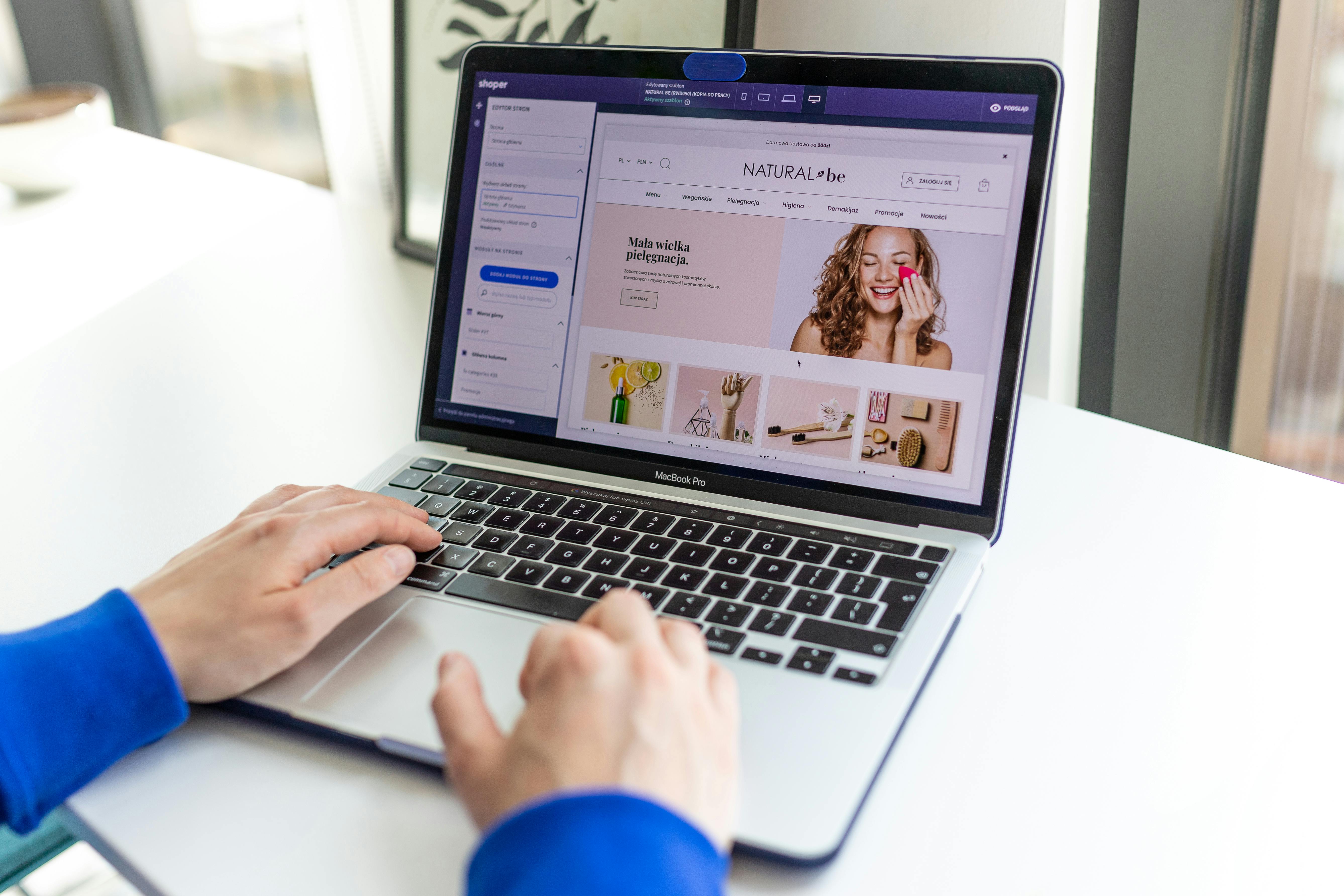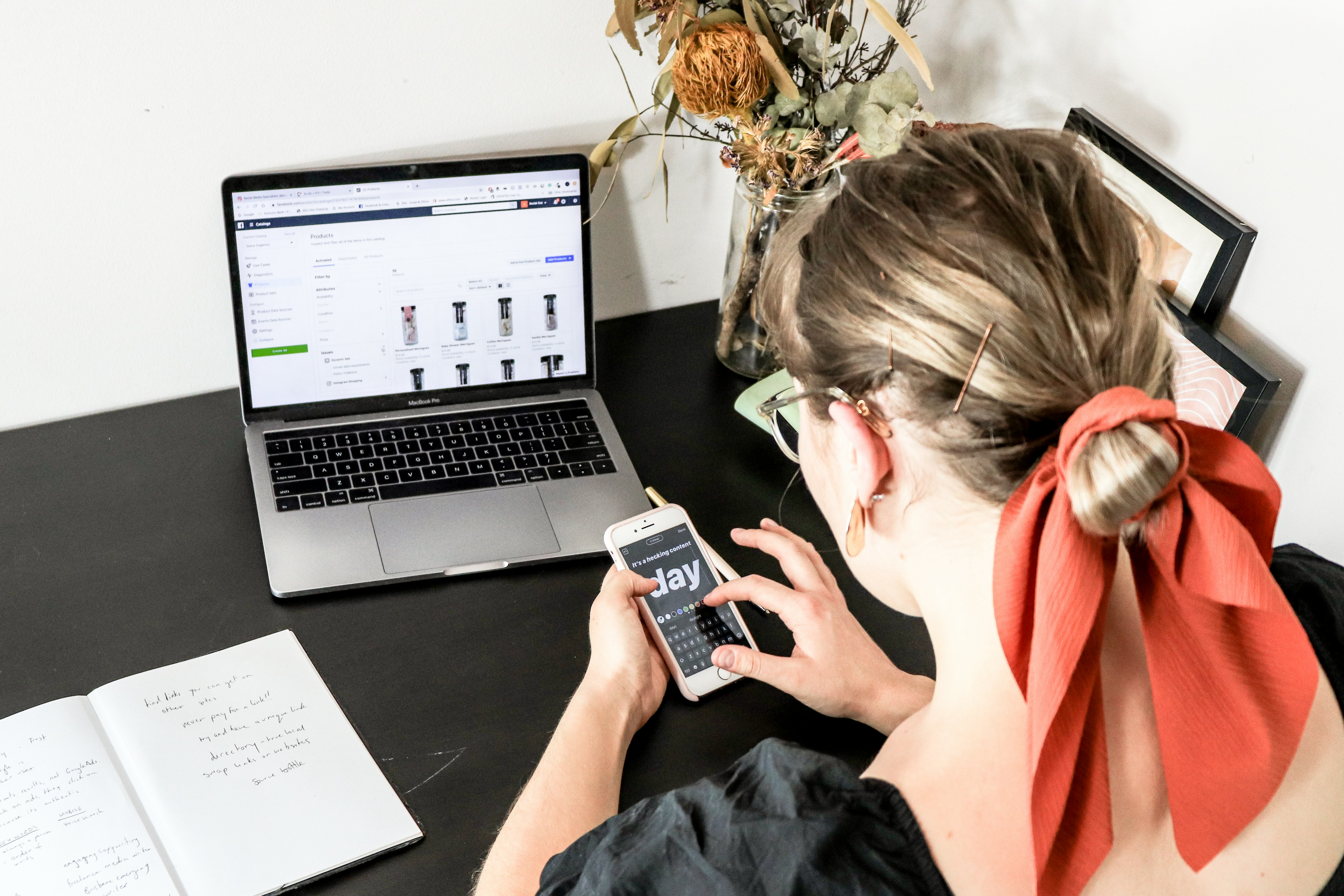
Source: Pexels - CC0 License
Driving traffic to your Shopify store is critical if you run an ecommerce business. You need people to find you organically and through paid methods if you want to succeed.
Today, more than 4.5 million live Shopify stores exist. When you think about how many retailers you can count from memory, that’s an incredible number. Out of the countless alternatives, your customers have to find you.
But how can you achieve such a feat? The answers aren’t always obvious, especially in a highly competitive niche.
Fortunately, this in-depth guide has some useful ideas. It explores how to drive traffic to your Shopify store using various tools and combining them yields the best results.
So what do you need to do? Here are some actionable tips to consider.
Offer Exclusive Deals And Discounts

You could start by offering exclusive deals to customers who shop with you. Special discounts show them you care and want them to shop with you.
Adopting this strategy can help you beat out the competition. For example, 90% of shoppers think they can find better deals online than in-store, so you can use them to break the buying cycle. Furthermore, 72% of shoppers want personalized discounts on items they buy, so combining deals with AI could boost conversions even more.
Many brands start by allowing shoppers to peruse items and put them in their carts at the full price with the hope that they convert. Then, they lower the price if they don’t buy by sending them a special discount code. If that doesn’t work, they sometimes up the ante even more, offering additional discounts for a quick purchase.
However, these special codes and vouchers often come with time limits. For example, customers may only be able to take advantage of special offers if they make purchases within, say, 48 hours, encouraging them to part with their cash.
Even small discounts, like 5%, 10%, or 15% can profoundly impact buying decisions. Online shoppers love it when they get an extra discount, just for showing up, encouraging them to take advantage of the opportunity to get what they want now instead of waiting until later.
You can send countdown timers to their emails, add them to home screens, or include them on checkout pages (similar to next-day delivery timers). These provide transparency and subtly pressure buyers to act and purchase from your store. No, it won’t work every time. However, it can be highly effective for specific customer subgroups who love bargains.
If that approach isn’t practical, send special offers to the shoppers on your email list. Remind them about their codes and discounts that let them get what they want at a far lower price.
Create High-Quality Content
Another strategy to drive traffic to your Shopify store is to create high-quality content. While your primary role is to be an ecommerce shop, you can attract leads simply by generating blogs and videos consumers in your niche want to watch.
Remember, 44% of shoppers prefer learning about products through short video content while 82% say they pick brands with an active online content presence. Many want content that embodies “social proof” to give them the confidence to buy.
Creating high-quality content is essential for generating organic traffic. For example, writing the best articles on the internet about gel blasters is highly likely to drive leads to your site if that’s what you sell. The same applies to other products, like car covers, windows/doors, skincare products, and anything else you can imagine. Interested consumers always want to learn how you can benefit them and why they should part with their hard-earned money.
Here are some content types you could explore:
- Customer stories. You could get your customers to create user-generated content (UGC) explaining why they use your products/services and what makes them great. This approach works because it is powerful social proof. If your audience sees that their peers benefit from your products, they are more likely to believe they can, too.
- Tutorials. You can also experiment with how-tos and instructional videos. These go into depth, explaining how your products and services work. These are exceptionally helpful for people who don’t understand the features and benefits or want to enjoy an optimal experience. Supplement companies, yacht firms, and software developers can all benefit from this approach.
- Product use cases. Sometimes customer success stories aren’t enough–you also need product use cases or case studies. These go into detail about the benefits customers can expect using your products, including the challenges faced and how specific, verifiable customers overcame them. Case studies don’t always seem like social proof, but that’s essentially what they are. You can think of them as extended reviews of the products on your Shopify store (especially if you offer a niche product or develop it in-house).
- Videos. Videos are the main way you want to reach customers and direct them to your Shopify store. Research shows that short clips are the most effective for promoting products online.
- Infographics. You can also try infographics if you want. These were popular ten years ago but are still helpful for stores selling complex products requiring graphical explanation.
- Podcasts. Lastly, you could experiment with podcasts. Creating radio episodes is often an excellent way to go into depth about the items you sell, speak to experts, and liaise with manufacturers on their methods to achieve incredible results.
Of course, learning how to drive traffic to your Shopify store can take time. It isn’t something you will master overnight. But the rewards can be tremendous once you get the hang of it. The more you practice, the more compelling your blogs and videos will be, encouraging more people to visit your site organically (instead of through paid channels).
Work With Influencers And Affiliates

You can also drive traffic to your Shopify store by working with influencers and affiliates. Finding people in your niche who can sell your products is one of the most powerful ways to drive sales.
Influencers are effective because your audience already trusts them. Most consumers want people they already know to recommend products to them and make their lives easier (helping them overcome things like decision fatigue).
Affiliates can also be helpful, but perhaps not to the same extent because shoppers don’t have a personal relationship with them. Even so, they may take their recommendations seriously and follow their links.
For maximum success, you will need to find influencers in your niche. You can do this by:
- Leveraging influencer platforms that simplify the influencer search process
- Going onto social media and looking for influencers commenting on your posts or discussing your products
- Asking your audience who they watch in your niche via social surveys
Once you find people to work with, you must do the groundwork. Depending on your strategy, this could include:
- Setting up a brand influencer program (providing resources, paid deals, etc.)
- Setting up an affiliate program (including requirements, commissions, rules, etc.)
Working with influencers can be highly lucrative on social sites like TikTok and Instagram for products amenable to visual selling. Hospitality, cosmetic, fashion, and luxury brands perform well when they target these platforms. Affiliate marketing works better for firms wanting to sell bulk items that aren’t as visual, such as SEO agencies peddling links. Be sure to pick the approach that suits you best. Sometimes working with influencers makes sense, other times affiliates, or both.
Learning how to get traffic to your Shopify store with affiliates is essential for most companies. Leveraging their creative skills and social capital often helps you drive more organic traffic to your Shopify store pages faster.
Construct Your Email Marketing Strategy
Email is one of the most powerful tools for engaging with customers directly with proven benefits over many years. As such, your Shopify Store needs a marketing strategy that includes it.
The average click-through rate for online email campaigns is around 2.62%. That sounds low, but it costs almost nothing to send emails, so virtually all ROI metrics are positive. Furthermore, data show that email marketing return on investment is still improving, with half of professionals telling researchers reporting a 100% improvement in their campaigns in 2023 alone.
Compelling marketing email creation is something you will need to practice. But with time, you can condense it into a formula and create the content you need faster before scheduling it on a mail outreach app.
The primary challenge of email marketing is collecting email addresses. Many Shopify stores find it hard to get their customers to subscribe.
The most popular ways of skirting around this issue are:
- Offering discounts in exchange for contact information (i.e. email addresses)
- Creating pop-ups that encourage shoppers to enter their email information
These days, online consumers are more likely to enter their details into interstitials because browsers, like Google Chrome, do it for them with a single click. Smart field-filling makes it more likely that interrupting your shoppers’ website experience will result in a sign-up, even if they find it annoying.
The next step is to create emails that supply value to your Shopify-using audience. This stage is harder because what you include depends on your niche.
Generally speaking, you want emails to:
- Contain further discounts or special offers
- Discuss new product launches that your audience will find exciting
- Provide news updates on developments at the firm that impact customers in some way
You can also adopt other strategies. For example, health supplement companies sometimes send seasonal “health kick” emails describing what customers can do over several days to improve their physiology. Likewise, red light therapy companies provide scientific updates.
Which approach you choose will depend on your specific products. Science updates make sense if you sell something cutting-edge, while entertainment is better for tried-and-true product lines.
Use Paid Advertising, But Don’t Go Overboard
While learning how to drive traffic to your Shopify store for free is fun, it isn’t always possible. Sometimes, you must pay to get customers, especially when you start.
These days, you have several paid options to reach out to prospects:
- Google Search. The world’s largest search engine targets shoppers in your niche by tailoring ads to specific demographics.
- Facebook Ads. The social network uses an in-built, native ad engine that lets you advertise on the platform for a fee.
- TikTok Ads. A platform built into the Chinese social media platform that lets you find people who want to buy from you.
Again, which you choose will depend considerably on your niche and where your target audience spends most of their time. For example, shoppers interested in fishing tackle are most likely on Google while those searching for skincare are likely to be on TikTok (because of the plethora of visual product content on the platform).
You can find similar ad tools on sites like Instagram and LinkedIn if these platforms cater to people in your niche. However, the message remains essentially the same–you want to choose a digital location that complements your brand.
When setting up a campaign, keep it budget-friendly. You can spend near-infinite money to attract audiences, but this isn’t wise.
The trick is to set your budget at a sensible level that’s right for your Shopify business. Platforms will then automatically bid for space against other brands, positioning your ads in prime on-screen locations based on your overall success.
You can tell platforms to behave in different ways. Some allow you to impose a cap overall, while others let you choose how much you want to spend for a specific keyword.
Also, ensure you are retargeting users who visit your site. Reminding them that you exist after they leave can be highly beneficial.
Retargeting means that your on-platform ads will appear off-platform, too, at various third-party sites. This form of marketing is cost-effective to run and encourages consumers to circle back and reconsider whatever they want to buy from you.
Most Shopify stores use intelligent remarketing that shows products shoppers find interesting in banners or carousels. These encourage browsing and considerably higher click-through rates.
Use Social Media Marketing

Social media marketing is another way to drive traffic to your Shopify store. Some say it is the most effective method in 2025.
But what does the data say?
One study reported that 58% of shoppers purchased a product after seeing it on social media. Another said 27% of internet users prefer discovering future purchases through social media than any other channel.
Most Shopify brands focus on visuals on social media platforms, like TikTok, Instagram, Pinterest, and Facebook, to generate the most impact. However, it makes sense for some niche stores to target other platforms. For example, B2B suppliers often advertise on LinkedIn to reach a professional audience while teen product companies sometimes use Snapchat.
To succeed in social media marketing for your Shopify store, you need to:
- Focus as much as possible on visual content
- Use videos to engage users, showcasing products
- Use UGC from former customers or influencers
The best way to drum up hype for your products (and Shopify brand) is to engage in giveaways. These encourage people to sign up for your emails in exchange for a chance to enter a prize draw. (You can give a prize to everyone who signs up, but just make sure you can afford it).
You can also engage in guerilla marketing on social media platforms. This strategy involves finding innovative but inexpensive ways to locate audiences in your niche. For example, you could do a stunt to attract attention or compare yourself to the leading brand, proving your services are better.
You could also simply work through influencers to secure interest in your products (if they don’t stand well by themselves). Hardware providers often do this if they can’t develop in-house content.
Make Your Store SEO Friendly
Making your store SEO friendly is another tactic to drive traffic to your store (and something you should focus on at the start). The more visible you can make yourself on Google, the more likely you will attract organic traffic (and save money on PPC ads).
Fortunately, Shopify provides tools that make it simple to enhance your SEO and get noticed (which is one of the reasons why the platform is so popular), targeting on-page factors. For example, the platform helps with:
- Meta titles and tags for pages
- Image tags
- Keyword optimization
- Product descriptions
- Landing pages
- Name, Address, Phone (NAP) information
It also does most of the backend SEO by providing schema markup and fast loading times. However, it doesn’t help you as much with off-site search engine optimization, which also is the most effective.
For this reason, you will need to build links to your store. Getting high-authority domains to link to you is an excellent way to move your site toward the top of the first page of Google results for specific keywords. It also helps to generate innate authority by partnering with sites that search engines trust.
If you find it challenging to build links organically, get a link-building agency to do it for you. Professional services like these can tap into existing networks and create organic, white-hat links that don’t violate Google’s policies.
Blog content is critical for companies exploring SEO (as discussed earlier). The better you can make your content, the more likely other sites will link to you.
Make your blogs unique, containing original research if possible. These articles often serve as link magnets, encouraging other sites to reference you in their work.
Also, focus on creating the most engaging, highest-value content. Google often prioritizes this over “thin” content that doesn’t help its users.
Numerous tools can help you grow your Shopify store’s organic traffic, including:
- SEMrush – a tool that lets you search for relevant keywords and sleuth on competitors
- Ahrefs – a slightly more comprehensive tool that also includes AI planning and additional SEO features
- Ubersuggest – a free keyword tool developed by Neil Patel you can use to plan web copy and blog content
Understand Your Audience
Lastly, understand your audience to learn how to drive traffic to your Shopify store. Getting to know them well is essential for targeting them accurately online.
Start by creating detailed buyer personas that include the details and features of the average person buying from you. If you don’t know, use surveys to collect this information.
Knowing your ideal buyer is helpful because it informs everything else you do, including your marketing and strategy. Once you know what interests your audience, it becomes easier to sell to them.
Run through all the details that matter to your customers, including:
-
Demographics
- Age – the specific age range of people who buy from you (i.e. 18 - 24)
- Marital status – whether your customers are married, single, or divorced on average
- Family structure – whether customers are from family homes, and how many siblings/pets they had
- Gender – the sex of your audience, including categories like non-binary where necessary
- Language – whether they speak English, Spanish, or another language overseas
- Education level – their highest formal qualification (i.e. SATs, degrees, post-grad qualifications)
- Income level – how much they earn every year
-
Behaviors
- Response to discounts – how bargain-hungry shoppers are to the rest of the general public
- Use of technology – whether shoppers understand how to browse your store
- Media consumption – the social media channels they watch to get product-related content
- Shopping preferences – whether they like to shop in-store or online
- Brand interaction – how customers prefer to interact with you
- Buying habits – how much customers like to buy in a single purchase, or how frequently they visit your store
-
Psychographics
- Goals – things your customers care about
- Preferred communication style – whether they like to be frilly or frank
- Motivations – what gets them out of bed in the morning
Now You Know How To Drive Traffic To Your Shopify Store
Reading this guide, you should have a clearer idea of how to drive traffic to your Shopify store. No, it isn’t an easy process for most ecommerce businesses, but, as with anything in business, there are always ways through.
If you want to scale profitably and quickly with hassle-free, no-code tracking for all your social media pixels, use MultiPixels.
FAQs
How do I drive traffic to my Shopify store?
The above guide offers some great tips on how to get more traffic to your Shopify store. A few key Shopify store tips to consider include offering exclusive deals and discounts, making your store SEO friendly, implementing social media marketing (including working with influencers) and doing some paid advertising.
What are the best ways to get more traffic to a Shopify store?
There are many ways to drive traffic to a Shopify store including optimizing your website for search engines (SEO), leveraging social media platforms to reach a broader audience, and running targeted ads. The above Shopify tips delve into other strategies such as email marketing and influencer marketing.
Why is my Shopify store not getting traffic?
Poor SEO practises, lack of social media promotion or poor ad targeting could all be reasons why you’re not getting enough Shopify traffic. Consider your current marketing strategies and incorporate some of the above Shopify store tips.
Do Shopify SEO tips really help in driving traffic?
Yes, Shopify SEO tips such as using meta titles/tags, optimizing keywords, writing engaging blog content and investing in link building can all have a positive impact in boosting visitors.
What are the top Shopify tips to increase sales and traffic?
The top Shopify store tips to drive traffic to your store include:
- Offering exclusive deals and discounts
- Creating high quality content
- Collaborating with influencers and affiliates
- Building an effective email marketing strategy
- Using paid advertising strategically
- Engaging with consumers on social media
- Optimizing your site for search engines
- Getting to know your audience
How long does it take to get traffic to a new Shopify store?
It depends on what strategies you are using as to how quickly your store will attract traffic. Carefully targeted paid ads and social media marketing could help you to attract visitors straight away, while SEO can take several weeks to several months to take effect. In many cases, it takes time to build up traffic, so try to be patient when implementing the above Shopify store tips.
Can paid ads help in driving traffic to a Shopify store?
Yes, paid ads are excellent for providing an extra boost in traffic. But be careful not to go overboard. Keep to a tight budget and make sure you’re targeting the right people (including retargeting users who have already visited your site).
Are you ready to Grow your Business?
Get started
